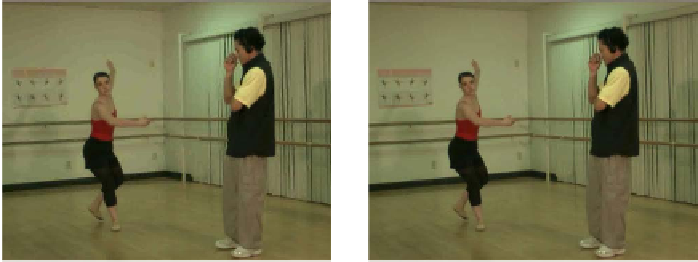Information Technology Reference
In-Depth Information
rendering process. Any errors, such as blocking and mismatch between color and
depth map structures, will therefore be magnified for objects closer to the camera. The
proposed solution uses the depth information for image segmentation at the application
layer, and then at the transmission layer, objects are prioritized depending on their per-
ceptual importance in the scene. Fig. 1 presents one such example. The background
object in left image has been quantized by twice the factor as used for quantization in
the right image. However, both images appear to have almost similar visual quality.
Fig. 1
Visual attention example. Left image has twice as coarsel
y quantize
d background
object as in right image.
The chapter is structured as follows. Section 2 presents background information
about the issues addressed in the design of the proposed solution. In section 3, a
cross layer design for optimized 3D video communication is proposed. Section 4
gives experiments details and results. Conclusions are provided in Section 5.
2 3D Video Transmission
There are numerous formats to represent 3D video, and one of the most popular is
video plus depth. This format is described in the MPEG-C, Part 3 standard, and is
used in a number of commercially available 3D displays [5]. The basic principles
for coding of 2D video can be applied to 3D videos. However, 3D video presents
new challenges for transmission as it carries extra depth information along with
color and texture. The depth information is required for content rendering at the
3D viewable display devices. This section discusses different aspects of the 3D
video transmission system and highlights the perceptual based optimization possi-
bilities for 3D video content transmission over WLAN.
2.1 3D Video Fundamentals
According to the classification of MPEG-3DAV (Motion Picture Expert Group-
3D Audio Visual), three scene representations of 3D video have been identified,

